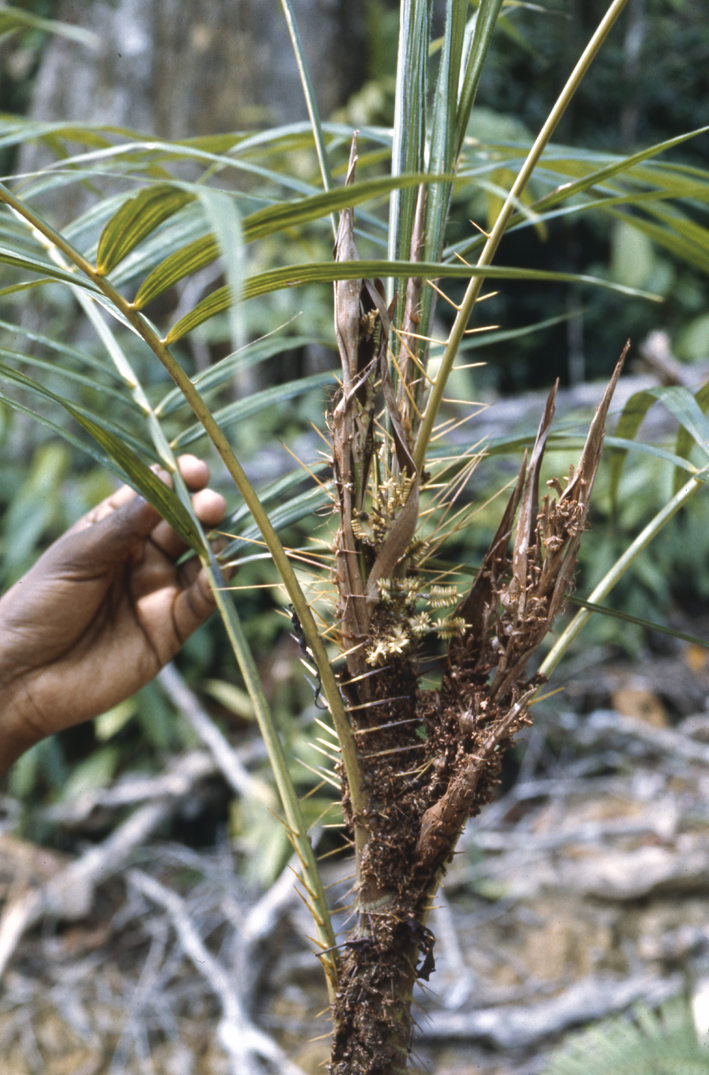- Acanthophoenix
- Acrocomia
- Actinokentia
- Actinorhytis
- Adonidia
- Aiphanes
- Allagoptera
- Ammandra
- Aphandra
- Archontophoenix
- Areca
- Arenga
- Asterogyne
- Astrocaryum
- Attalea
- Bactris
- Balaka
- Barcella
- Basselinia
- Beccariophoenix
- Bismarckia
- Borassodendron
- Borassus
- Brassiophoenix
- Burretiokentia
- Butia
- Calamus
- Calyptrocalyx
- Calyptrogyne
- Calyptronoma
- Carpentaria
- Carpoxylon
- Caryota
- Ceratolobus
- Ceroxylon
- Chamaedorea
- Chamaerops
- Chambeyronia
- Chelyocarpus
- Chuniophoenix
- Clinosperma
- Coccothrinax
- Cocos
- Corypha
- Cryosophila
- Cyphokentia
- Cyphophoenix
- Cyphosperma
- Deckenia
- Desmoncus
- Dictyocaryum
- Drymophloeus
- Dypsis
- Elaeis
- Eleiodoxa
- Eremospatha
- Eugeissona
- Euterpe
- Gaussia
- Geonoma
- Guihaia
- Hedyscepe
- Hemithrinax
- Howea
- Hyophorbe
- Hyospathe
- Hyphaene
- Iriartea
- Iriartella
- Itaya
- Jailoloa
- Johannesteijsmannia
- Juania
- Jubaea
- Jubaeopsis
- Kentiopsis
- Kerriodoxa
- Korthalsia
- Laccospadix
- Laccosperma
- Lanonia
- Latania
- Lemurophoenix
- Leopoldinia
- Lepidocaryum
- Lepidorrhachis
- Leucothrinax
- Licuala
- Linospadix
- Livistona
- Lodoicea
- Lytocaryum
- Manicaria
- Manjekia
- Marojejya
- Masoala
- Mauritia
- Mauritiella
- Maxburretia
- Medemia
- Metroxylon
- Myrialepis
- Nannorrhops
- Nenga
- Neonicholsonia
- Neoveitchia
- Nephrosperma
- Normanbya
- Nypa
- Oenocarpus
- Oncocalamus
- Oncosperma
- Orania
- Oraniopsis
- Parajubaea
- Pelagodoxa
- Phoenicophorium
- Phoenix
- Pholidocarpus
- Pholidostachys
- Physokentia
- Phytelephas
- Pigafetta
- Pinanga
- Plectocomia
- Plectocomiopsis
- Podococcus
- Pogonotium
- Ponapea
- Prestoea
- Pseudophoenix
- Ptychococcus
- Ptychosperma
- Raphia
- Ravenea
- Reinhardtia
- Retispatha
- Rhapidophyllum
- Rhapis
- Rhopalostylis
- Roscheria
- Roystonea
- Sabal
- Sabinaria
- Salacca
- Saribus
- Satakentia
- Satranala
- Schippia
- Sclerosperma
- Socratea
- Solfia
- Sommieria
- Syagrus
- Synechanthus
- Tahina
- Tectiphiala
- Thrinax
- Trachycarpus
- Trithrinax
- Veitchia
- Verschaffeltia
- Voanioala
- Wallaceodoxa
- Wallichia
- Welfia
- Wendlandiella
- Wettinia
- Wodyetia
- Zombia
- x Jubautia splendens
- ?? Acoelorrhaphe
- ?? Bentinckia
- ?? Brahea
- ?? Clinostigma
- ?? Colpothrinax
- ?? Copernicia
- ?? Cyrtostachys
- ?? Dictyosperma
- ?? Dransfieldia
- ?? Heterospathe
- ?? Hydriastele
- ?? Iguanura
- ?? Incertae sedis & excluded names
- ?? Loxococcus
- ?? Micronoma
- ?? Paripon
- ?? Pritchardia
- ?? Rhopaloblaste
- ?? Serenoa
- ?? Washingtonia

Distribution
Known from a single collection. Also in Sarawak, Johor and Natuna Islands in the South China Sea. (Dransfield, J. 1997: The Rattans of Brunei Darussalam)A
Discussion
- This species has a wide altitudinal range, occurring from sea level to up to c. 1,000 m or more in Borneo. The only record from Brunei was at about 80 m above sea level in forest transitional between mixed dipterocarp forest and kerangas. The large petiole spines, regular leaflets with unusual bristle arrangement, together with the slender peduncle, large flowers and fruit, make this short-stemmed species most distinctive. (Dransfield, J. 1997: The Rattans of Brunei Darussalam)A
Etymology
- Bearing a scape (Dransfield, J. 1997: The Rattans of Brunei Darussalam)A
Common Name
- Wi Empunok Ruai (Ib.) (Dransfield, J. 1997: The Rattans of Brunei Darussalam)A
Uses
- The fruit is good to eat; stems may be used for walking-sticks. (Dransfield, J. 1997: The Rattans of Brunei Darussalam)A
Description
- Solitary, stemless or erect rattan with stem rarely more than 2 m tall, sometimes ± creeping; stem without sheaths to 20 mm diam., with sheaths to 40 mm diam., internodes very short, rarely exceeding 1 cm. Sheath dull green, covered in brown hairs and armed with brownish spines, solitary or arranged in horizontal or oblique groups, the longest c. 30 mm, except near the sheath mouth where much longer; knee absent. Leaf ecirrate, to 2 m, often less; petiole to 50 cm long, armed with regular, very conspicuous, lateral, slightly upward-pointing spines to 9 cm, 2-4 cm distant, smaller spines sometimes paired with the larger; leaflets about 30-50 on each side of the rachis, very regular, close, slightly curved, the longest to 35 × 2.5 cm, usually less, bristly along the margins and mid nerve on upper surface, densely bristly on all nerves on lower surface, especially the mid nerve where bristles smaller and more frequent. Inflorescences usually with a long, slender, eventually pendulous peduncle to 30 cm, unarmed or armed with short regular spines along the margins; bracts crowded at the peduncle tip, about 5 in number, the largest c. 10 × 2 cm, papery, unarmed or more usually armed with shaggy hairy soft pale brown spines to 1 cm long; partial inflorescences short; flowers unusually large, to 5 × 2 mm. Mature fruit rounded, relatively very large, up to 30 mm diam., briefly beaked, covered in 13-15 vertical rows of strawcoloured scales, marked with purplish-black at the tip or purplish-black throughout. Sarcotesta thick, sweet; seed rounded, c. 15 mm diam., deeply ruminate. Seedling leaf with 4-6 leaflets. (Fig. 20, Pl. 4D). (Dransfield, J. 1997: The Rattans of Brunei Darussalam)A
Materials Examined
- BEL: Melilas, Bt.Batu Patam, Dransfield J. 6595. (Dransfield, J. 1997: The Rattans of Brunei Darussalam)A
- Log in to post comments

